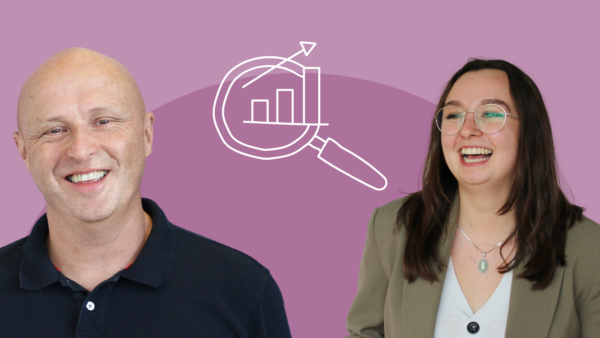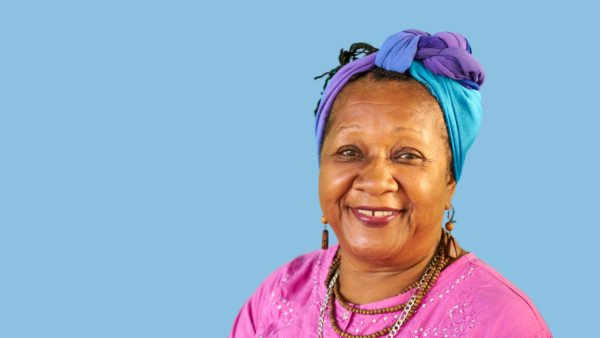More offices and workplaces are now starting to open and more people are returning to work, and there’s an unusual atmosphere of normality combined with concerns about the unknown. To ease those concerns and increase the feeling of normality, my headline advice is to go for familiarity and control, that will help ease any stress and tension you might be feeling, and that includes remembering your own strengths that can help you and risk areas which could hinder you. This week, then, I want to talk about returning to work – the strengths way.
My name’s Dr Paul Brewerton, the strengths guy, Founder of Strengthscope and Doctor of Psychology. I’ve been studying the way that we humans can get the best from work for 25 years – my podcasts bring you the result of much of that experience, combined with curated research carried out by experts to help you get more from work and from life.
This week, I have 4 areas for you to consider that will help ease you back to work:
- go for the familiar on your commute;
- take your strengths with you;
- actively manage your risk areas; and
- be kind to yourself. Let’s start with your commute back.
Go for the familiar on your commute
It is definitely true that many of us haven’t done our usual commute now for a good few months, so inevitably you might wonder how things will have changed, how you’ll feel in a covid world doing something that you used to do so effortlessly, even automatically. So right there is the key to managing your anxiety as you make your back to work…for the first time in particular, a lot of the fear and anxiety around those things when you get there will be unfounded. In reality, we’ve all become a lot more familiar with social distancing, mask wearing, hand-sanitising than we were a few months ago and so you can reassure yourself that you’ve got this.
Because when you combine the familiarity of what once was your ‘normal commute’ with the new-found familiarity of navigating through a Covid-altered world, it’s not too hard to visualise how your journey to work will actually be in reality. Often that fear of the unknown, when you break it down and start to visualise the reality of it, that fear or anxiety starts to lessen, as you realise that not only do you know 99% of what’s likely to happen to you, but the 100% certainty about the whole experience is that you will be there, because wherever you go and whatever you do, you’re always there.
So play the whole experience through in your mind, real time if you like, and you’ll be surprised how reassured you feel at the end. Also, do prepare the stuff that you can do beforehand that will actually take brainpower on the morning of your trip back in – like picking clothes, making lunch, finding your coffee cup, your office access fob, locker key, booking your parking space and so on and so on. That will all help reduce your stress on the day itself when you’ll have less brainpower to work with. Let’s move on to my second recommendation: taking your strengths with you.
Take your strengths with you
On your commute and when you’re back at work – know which strengths will help you the most…remember, our strengths are those qualities that energise us and which we are great at or have the potential to become great at, so which of those qualities will you choose to use to get yourself back to work well? In short, any and all your strengths can be an asset when you consider how to use them best in a given context.
When you’re in a slightly uncertain mode and maybe a little rusty when it comes to all the things you used to take for granted – chatting with the coffee shop staff at the station, smiling at your work colleagues (hugging your work colleagues?) when you get to the office, whatever it is, have a think about which strengths will help you positively reconnect with your return to work. Here’s a couple of examples of what I mean:
You might choose to use Relationship building, say, to be friendly and make a connection with people you meet on the way into work. Raising a smile might not be what it used to be (when wearing a mask) but we can all still spot smiling eyes, even with a face covering. Wait longer to get acknowledgement when holding eye contact so you can be sure you’ve made that connection. Be louder and clearer in your speech to be heard, and take your time, don’t rush, things are likely to take a little longer than usual and that’s OK.
Find a strength to get the first time commute back to work out of the way – Results focus to get it done, Self-improvement to take on board the learning, Courage to face into it, Resilience to overcome any personal challenges you might have, whatever works for you.
Back in the office, Empathy, Compassion or Collaboration for example can help you re-connect with colleagues and to understand how things have been for them and how they’re finding it right now. As I say, it doesn’t matter so much which strengths you choose, it’s the active choosing of them and remembering to bring them into your interactions and into your day that will leave you feeling stronger, more positive and more confident. So that’s your strengths; how about risk areas though?
Manage your risk areas
What are your risk areas and how will you manage them? We tend to think of risk areas as strengths in overdrive, when they can go too far and have unintended consequences, and also drainers, areas where we don’t have strength and where we can feel drained if we’re asked to go there too often. Overdrive risks are important when we’re under increased stress and any time of change will create that for most of us, including going back to work with the various differences we’ll encounter.
As an example of strength in overdrive risks, my Self-confidence and my Optimism in overdrive often mean that I underestimate how long things will take to do and so cause myself unnecessary stress – things will take longer on the return to work, so I shouldn’t assume they won’t. If Enthusiasm goes into overdrive, I might get over-excited about seeing everyone and being back in the office, when others are feeling more unsettled, so that won’t help the general atmosphere. And where you might feel frustration at social distancing; irritation at how long things now take – my advice is to chill and be mindful, enjoy the moments, and the fact that this is a step back towards some kind of normality.
As regards drainers, those areas where you feel drained if you’re asked to call of them too much – two of mine are Efficiency and Results focus. So if I have to make too much of a plan or definitely get to the office by a certain time, I’m going to create additional stress for myself, which I won’t need at a time when I’m getting back to grips with my new normal, so I’ll choose to take the option of being a bit more relaxed with myself in terms of journey to work and arrival time at work, or if I don’t have any flex in arrival time, just leaving earlier to give myself a chance.
Be kind to yourself
Speaking of giving myself a chance, my final recommendation is to be kind to yourself – it’s all new (again) and will take time and emotional energy to process so take it easy on yourself, don’t stay in denial, recognise that new normal isn’t normal – there may be familiar but there’s a lot of differences too, plus the difference of going to work rather than working from home and that will take time to get used to. My podcast at Season 4, episode 4 on how to do the holiday transition well may be useful here because this return to work has a lot in common with the change from holiday mode to work mode, so give that a listen.
Part of this is about making conscious choices, if and where possible, as to how much working from home vs office-based work you want to do. This will vary from organisation to organisation and from person to person, but many people will have choices in this regard. So while you’re in being kind to yourself mode, ask yourself how you actually want your working life to be right now and if the answer is to be more back in your workplace more of the time, then make those arrangements; if you’d prefer for workplace days to be less frequent, see what’s possible by speaking to your boss or just making your own call, if that’s an option.
It’s up to you – the new world of work is going to be more self-designed and self-driven than ever so don’t feel that you HAVE to follow a particular approach just because other people are. You may well have a choice in this.
So those are my top returning to work tips in a Covid world: go for the familiar on your commute; take your strengths with you; actively manage your risk areas; and be kind to yourself.
Good luck as you go back; you got this; seriously, everything will be fine. Till next time, stay strong.
This podcast is available on all major podcast platforms. Find it on Apple podcasts, Spotify, Google podcasts, Stitcher, ACast, TuneIn, Breaker and Soundcloud. Make sure to check out the back catalogue and subscribe to get them at the start of the working week!












